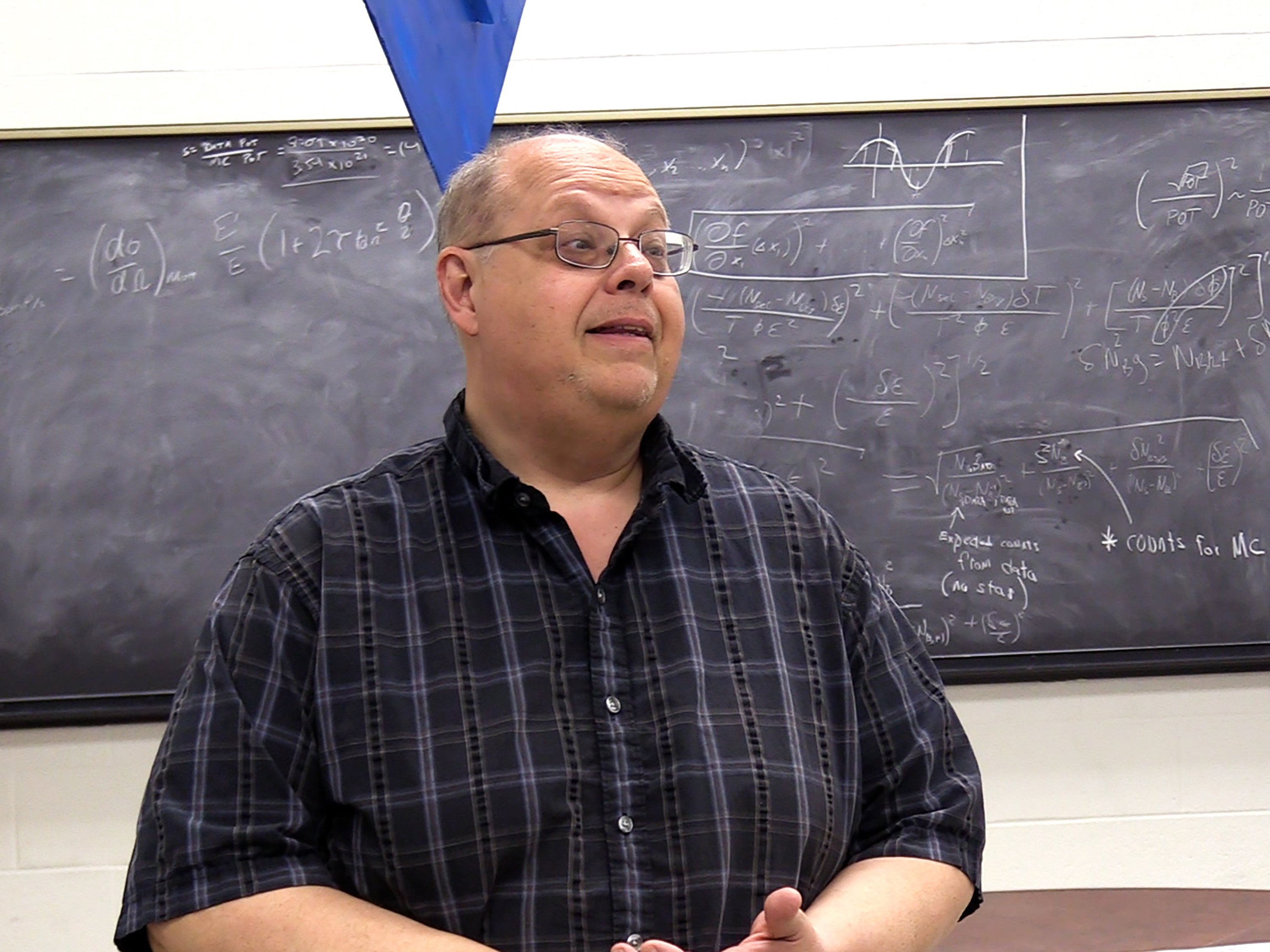Reaching for the stars and beyond, a CubeSat Mission Patch contest sponsored by Wichita State University and the Ad Astra Foundation aims to highlight WSU’s science and research programs to prospective students.
The competition, which is open to children in grades 6-12, asks participants to submit designs for a CubeSat mission patch. The CubeSat (a tiny satellite) will be flown in Earth orbit to collect data as part of Dr. Nickolas Solomey’s research on solar neutrinos.
Solomey, Wichita State professor of physics, was awarded a $2 million grant from NASA in April for his research on solar neutrinos and his alternative approach to get close to the sun to increase the density of neutrinos.
When he found out he’d need to design the patch for the CubeSat test mission, he decided to make the design part of a competition aimed at children from local schools.
“I thought it would be a really great way to highlight the science programs available at WSU and in Wichita while also increasing their knowledge of their proximity to these types of programs at WSU,” Solomey said.
Patches are typically designed and worn by space crews that are themed around the type of mission the crew will be a part of. Since there will be no actual crew members on the CubeSat mission, the patch will instead be featured on the satellite ground support facilities.
“I thought it would be a really great way to highlight the science programs available at WSU and in Wichita while also increasing their knowledge of their proximity to these types of programs at WSU.”—Dr. Nickolas Solomey.
To organize the competition, Solomey approached members of the Ad Astra Foundation in July. Founded in 2001, Ad Astra is an information resource focusing on high-tech and space-tech research in Kansas and promoting science, technology, engineering and math (STEM) education in the state.
The members of Ad Astra then put together the contest information; and with the help of Jill Fisher, WSU’s Fairmount Center director and STEM outreach coordinator, distributed information about the competition to Kansas schools.
Fisher, a recipient of the Kansas Space Grant Consortium, sets up STEM-themed summer camps and teacher workshops that focus on NASA initiatives for grades K-12. The camps and workshops are meant to gauge younger students’ interest in science. Fisher suggested broadening the competition to middle schoolers.
Though the competition is aimed at children and teenagers not currently attending WSU, Solomey saw this as an opportunity to highlight WSU’s role in research and science programs that can be available to them if they do choose to attend WSU.
“If we can get more students interested in science by showing them the cutting-edge things being done at WSU, they might consider us as a higher priority when they choose a college,” Solomey said. “WSU is doing really great things in science, and we provide a lot of research opportunities for our students.”
Steinert also sees value in opening the competition to younger community members.
“It seems like it's our duty to provide opportunities to Kansas youth that will help them enlarge their world,” Steinert said. “Engaging students in STEM seems to be one way to do that.”
WSU’s relationship with Ad Astra stretches all the way back to 2001 when the late Dr. Randall Chambers, WSU professor emeritus, co-founded Ad Astra. Ad Astra also frequently invites WSU professors and students for lectures at their annual Galaxy Forums and demonstrations at their science events, and interviews WSU members to highlight cutting-edge work in the organization’s newsletter.
“Because Nick had worked with our group over the years, he knew we had outreach and organizing experience, and asked if we would help with the nuts and bolts of it,” said Jeanette Steinert, Ad Astra initiative representative.
Students who want to participate in the competition can submit their patch designs on a form on the Ad Astra website by Nov. 12. Once completed, the top 20 submissions will then be judged by three of Solomey’s graduate students.


 Courtesy photo
Courtesy photo